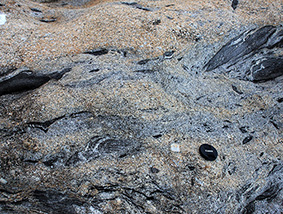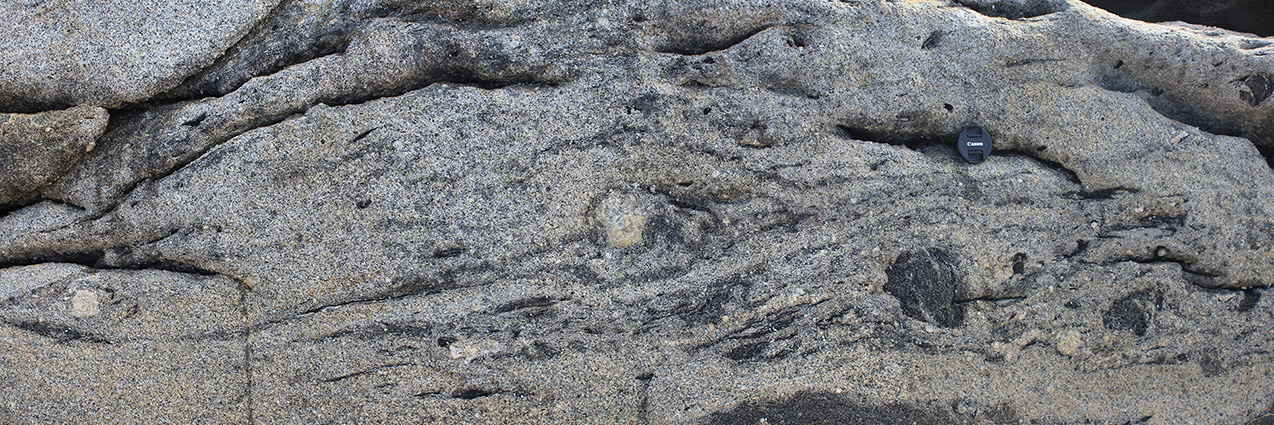Mingling Granite-Diatexite, Kangaroo Island, South Australia
|
| At Six Mile Lagoon, immediately E of Little Dicky Beach, there is a contact between a diatexite loaded with schollen-schlieren and a cleaner,
coarser, more leucocratic megacrystic granite. The two have complex contacts with the granite intruding and disaggregating the diatexite.
The irregular interleaving of the two, and the transfer
of schollen to the granite suggests the possibility that the two were in the magmatic state. Furthermore, the structures suggest that these rocks were being
sheared at the time on shear planes trending NNE/dipping moderaltely to shallow NW with an oblique dextral-thrust shear sense. The ditatexite granite is fine-grained, Bt-rich with 0.5cm Ms grains, and looks undeformed with foliation related to flow and disaggregation of schlieren. It has phenocrysts rather heterogeneously distributed, locally forming aggregates The megacrystic granite which mixes with diatexite is coarser-grained and more leucocratic with few rounded, metasedimentary xenoliths. |


